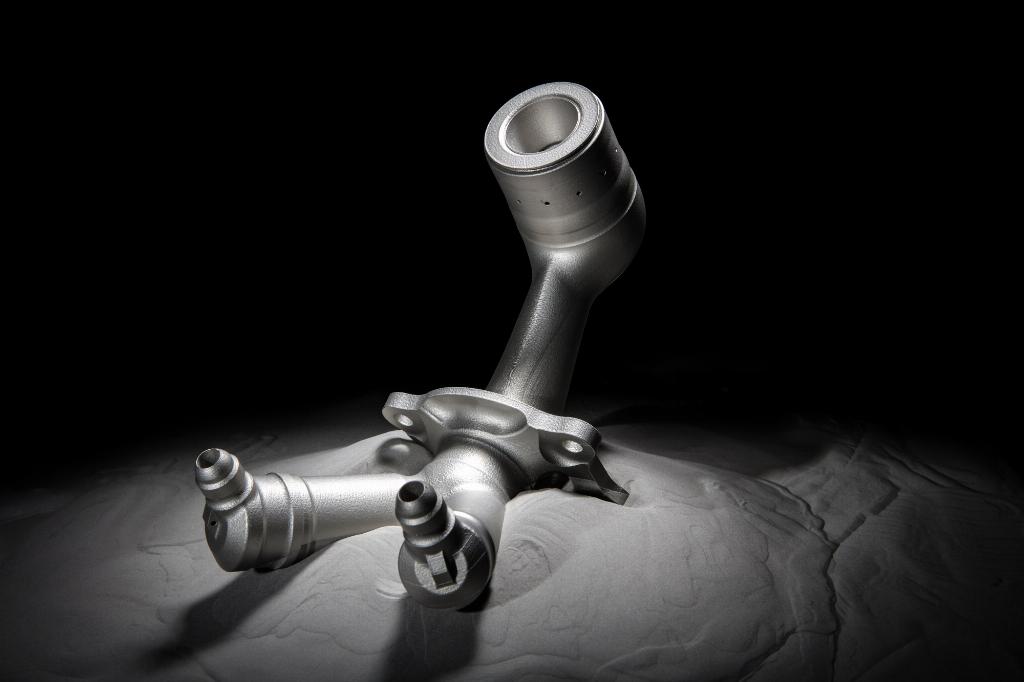Additive is the answer!

In a Q&A session, Chris Schuppe, GE Additive’s general manager of engineering and technology, explains why additive manufacturing holds the answer to manufacturing complex and difficult-to-machine components.
In a Q&A session, Chris Schuppe, GE Additive’s general manager of engineering and technology, explains why additive manufacturing holds the answer to manufacturing complex and difficult-to-machine components.

GE Additive strives to bring the transformative power of advanced manufacturing to aerospace businesses around the globe. Through its own experience incorporating additive technologies into its production process, GE Additive says it recognises the value and possibilities it brings to modern design and manufacturing challenges.
Q) What are the types of trends and demands placed on your company by today’s designers?
Customers are looking for optimisation of the total value chain of producing their parts, not just the printing itself. Everything from build file set up, distortion and compensation modelling, scan path optimisation, powder loading/unloading, recycling, post-processing, and inspection are just some examples where they are asking for help. Some customers are looking for dedicated service support or more autonomous servicing of the machines on their own. Many are also looking for help identifying the right applications and designing them for the best business case outcome.
Q) What are today’s customers looking for in terms of AM-related performance solutions?
Customers want to get to a first conforming print in as few iterations as possible – distortion and compensation modelling is a key enabler here. Powder recycling and reuse or virgin add to minimise powder costs while meeting material requirements.
Many customers in the aerospace sector are, of course, looking for reduced weight, cost, better thermal management in their additive parts. Applications include airfoils, complex structures, heat exchangers, rocket engine parts, satellite components, etc.
Q) How mature is the current additive manufacturing supply chain?
Much of the supply chain is mature from a production qualification perspective but it is mostly tailored to lower quantity production. High volume production techniques in terms of automation, powder handling, powder removal, inspection are still maturing though present in some high volume applications like GE Aviation's LEAP fuel nozzle where certain portions of the process have been automated, but there is still a long way to go to reach the automation levels seen in other industrial manufacturing processes.
Q) Is additive manufacturing restricted by the size of parts and the speed in which it can deposit materials?
It depends on the modality (i.e. powder bed, directed energy, etc.) that is applied, but in general there are limitations. Powder bed parts are generally limited to ~500mm in diameter or less today, though some progress to larger sizes is possible up to ~1m. Directed energy is in theory limitless in size, though typically there is some practical limit but parts up to 3-4m are quite possible.

Material deposition rates are also dependent on the modality: Single laser speeds are the slowest, but most machines now have gone to multi-laser systems that amplify this speed; Electron Beam Melting (EBM) is typically 2-4X the speed of a typical single laser; Binder jet is 50-100X the speed; Directed energy is very dependent on the type of deposition – blown powder, wire fed, etc typically trade resolution vs speed; Extremely fast deposition is possible, but typically with poor resolution.
Q) How much of a post-production issue is it to remove support webbing after the printing process?
It depends on the application and modality. Laser typically requires more supports, EBM less and binder jet typically none. However, multiple mitigations are possible: Limiting or eliminating supports through good design; Optimising the machine parameters to enable ‘supportless’ builds; Limited or non-contact supports; Frangible supports; Automated support removal.
Q) And how much is AM being used to print tools, say for sending parts over the wire to support an aircraft on the ground (AOG)?
This is limited today, but is a growing field of use. Several examples exist in other industries, and some in aerospace, of printing simple parts or tools in remote areas. The ability to print a good part the first time (as discussed above) will be a key enabler for more complex parts.
Q) Are derivatives of AM, such as wire and arc additive manufacture (WAAM) and EBM finding favour in the aerospace industry?
Yes. Directed energy systems like wire and arc additive have applicability especially for large, simple structures. EBM has applicability in difficult to solidify materials like high temperature nickel alloys and Titanium Aluminide - for example, where GE Aviation is printing low pressure turbine blades for the GE9X engine for the Boeing 777X that enable a significant weight reduction.
Q) With its ability to print complex, difficult-to-machine parts requiring multiple operations and entire subassemblies, is AM truly the way forward or are cycle times and ‘flight ready’ part qualification an issue?
AM truly enables complex components, and cycle times are coming down and will continue to improve as the total process matures. Flight ready parts have already been proven and are in revenue service in commercial, military and space applications.












